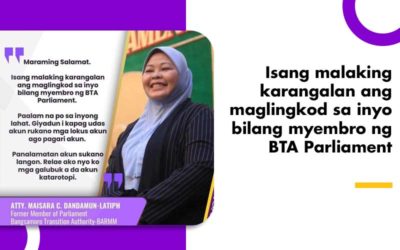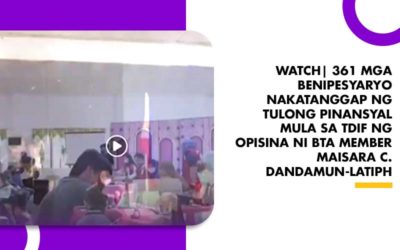Return of the displaced families to their residence and property in the Most Affected Areas from the Marawi Siege and providing Psycho-social and economic recovery support for them.

More than two (2) years of waiting after the declaration of Marawi’s liberation in October 2017, the IDPs on the one hand and the government through Task Force Bangon Marawi (TFBM) on the other are at a standstill.
The displaced families who have not been able to return to where their homes used to stand in the Most Affected Area (MAA) are scattered but have one unified call: LET US GO HOME.
For the government, however, things are not that simple. The bombs still have to be cleared, some demolitions will still be done, the master list of original residents and qualified land claimants of the MAA have to be finalized, and the rebuilding of the MAA will take time. On the big board of the TFBM, the master plan on display focuses on building infrastructure.
The dilemma of Marawi IDPs is uncertainty. They will have to wait in the temporary settlements, the traders and small business owners of the MAA will have to find other means to thrive. Impatience is increasingly turning into resentment, which, in turn, could fuel outrage. Questions need answers:
When will they be able to go back? Will they ever be able to go back and rebuild? Will they be compensated for the damages the siege has brought on them? Aside from rebuilding infrastructures, what, really, is the government’s plan for the IDPs? Or is there any plan for them at all?

With this situation, one of the things that the Bangsamoro Transition Authority (BTA) can immediately do is to facilitate genuine consultation and dialogue between the national government and IDPs, concluding with a signed and sealed legally binding document with clear commitments, deliverables, and timelines that are mutually beneficial and agreed to by both parties.
This report narrates only some of the details of the plight of IDPs but, more importantly, puts forward their recommendations on how the government can address their call.
BARMM, much like the rest of the country, is vulnerable to natural disasters.1 Surrounded by bodies of water and located along the Pacific Rim of Fire, the country has already been hit by disasters of all kinds. The climate crisis made what used to be typhoon-free areas in Mindanao such as Lanao del Sur more vulnerable to damages from strong winds and flooding. Natural disasters displace hundreds and sometimes thousands of families, and wreak havoc on agricultural lands and livelihood of the Bangsamoro.
In December 2017, Typhoon Vinta caused widespread flooding and displacements in Lanao del Sur, including Marawi City. When families return to their homes, reworking the fields takes time especially when local government capacity to bring aid and services is weak or non-existent. Gun fights and sporadic violence caused mainly by rido or clan feuds and armed bandit groups such as the Abu Sayaf, Maute and ISIS-inspired units also displace populations. The lack of government preparedness and policy responding to conflictinduced displacements makes the lives of displaced families seem hopeless. When nongovernment relief efforts stop, families are left to fend for themselves, making life unbearable, pushing some young women and men to enter into illegal and illicit trade and activities.
The focus of this report is the Internally Displaced (IDPs) from the Marawi Siege that erupted on the 23rd of May 2017 and lasted up to October the same year. The exchange of gun fires on the first day eventually escalated into a full-blown war, with heavy artillery and aerial bombings destroying the infrastructures where the ISIS-inspired elements were hiding. The siege destroyed 24 out of Marawi’s 96 barangays, covering 250 hectares of land, known before as “ground zero,” and now referred to as Most Affected Areas (MAA).



